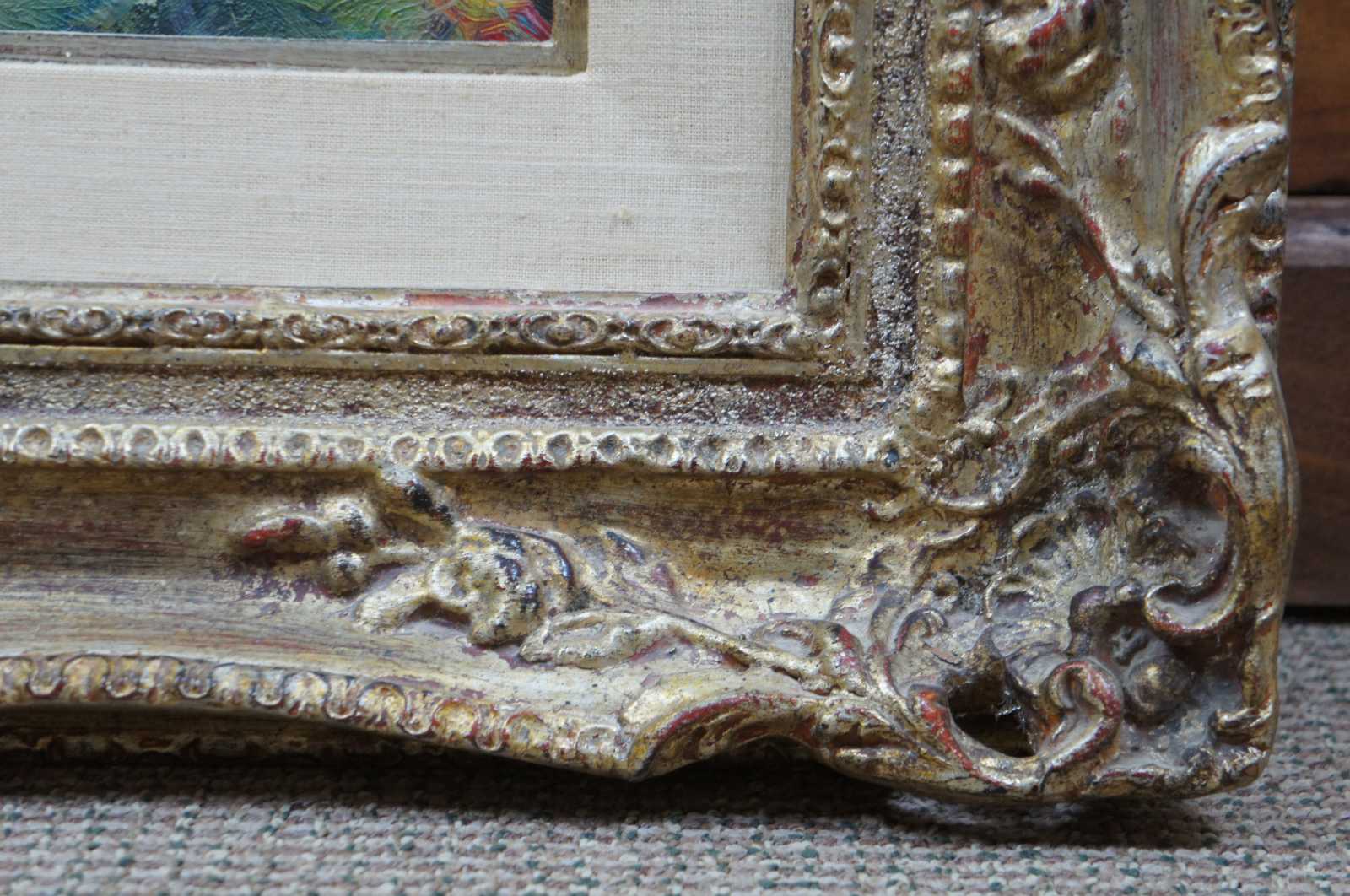
Francisco Masseria Original Oil Painting on Canvas Portrait of a Blonde Girl
Sold
Shipping:
Free Shipping Included
Delivery:
Estimated 2-15 Business Days
Payments:
Credit Card, Check, Cash, PayPal, Apple Pay, Venmo
Returns:
30 Days 100% Money Back Guarantee, Buyer Pays Return Shipping
Description
Francisco Masseria original oil portrait on canvas of a blonde child looking over her shoulder, accented by ornate gold baroque / rococo revival frame. Signed upper left and also on back.
The artist Francisco J. J. C. Masseria was born on April 7th, 1926 in Parana, capital of Province of Entre Rios, Argentina. Masseria's parents were Italian. Although none of his family were artists, Masseria evidenced a talent for art when he ws quite young, drawing color pencil portraits of his grade school friends. He began painting with oil paints when he was about 13 and progressed rapidly as an artist.His first achievement came at the age of fourteen when exhibiting at the Salon Annuale of Entre Rios he earned his first gold medal. His father, Joseph, encourage his son to pursue his talent as a ˜self taught artist. Masseria's paintings did not gain recognition in Argentina. ""I was known locally but not nationally"" he said during a visit to the USA. “The main problem was that I was a figurative painter, and the vogue was abstract art.” “I never believed in fads in art, he said. When I started to paint in Argentina people would say, ""˜Francisco, why don't you paint abstract art?"" I did not paint it because I did not feel it. Yet around 1970 I started to paint abstract art because it was within me at that time, not because it was the right thing to do at the moment.” At first glance, Masseria's paintings appear to be exquisitely classic ~ the luminous, angelic faces, the serene gaze of the untroubled, the Renaissance like costumes. But the backgrounds are of another time and place, whirling, swirling abstract masses. By combining the classic realism with the abstract Masseria achieved remarkable tension and release, the heartbeat of any art form. In my paintings, there is a painterly discourse in the backgrounds, he pointed out. They are not just haphazard. They have a meaning, a significance, and they stand on their own. I like to think that my painting leaves a little mystery and leads the viewer to discover new nuances in my work. Fusing realism and abstraction creates a distinctive style.Francisco J.J. C Masseria's art derives from two opposed schools of thought: the Romantic realism of Diego Velasquez, Peter Paul Rubens and Eugene Delacroix, and the swirling abstract expressionism of Chaim Soutine an dWillem de Kooning. Masseria combines these two forces in work that is both monumental and passionate. In the faces of his portraits Masseria attains a lyrical response to the human form, especially in developing the typically romantic serenity of the eyes. Like the Spaniard Velasquez, he applies vigorous brush work to his lively portraits, combining an economy of style with a painterly application of fresh translucent color. Velasquez and Masseria portraits have a fluid quality that results from the artists skillful manipulation of color. There is a virtuoso quality to Masseria's work that is similar to Rubens, the 17th Century Flemish master, and the Frenchman Delacroix. While the compositions of these artists alternate between baroque vitality and rhythmic balance, the technique is determinedly Romantic. Their touch is free and bold. Color is their essential medium of expression. Masseria, like the abstractionists Soutine and de Kooning, aligns himself with the modern theory that color and form can exist alone as a means of expression without reference to the imitation of visual reality. The slashing, twisting colors of Masseria's backgrounds are expressive even though they are nonrepresentational. Yet the colors, brush strokes and shapes of these backgrounds hold the same expressive quality, though in vastly different form, as the realistic portraits in the foregrounds. This detail from Willem de Kooning's Door to the River, 1960, dramatically illustrates the psychological impact of color and line. Masseria also uses the Psychological quality of abstracted color and line, as shown in this detail of the background in one of his paintings. Masseria's art forms a bridge between romantic-naturalism and the contemporary school of abstract-expressionism. The calm realism of the foregrounds contrasts with the dynamic tensions of the backgrounds. Out of this emerges a painting within a painting. The patterns of colors, densely intermingled and freely splattered, exist without reference to nature. They exist for themselves alone, as color, as line, as a complex within which movements, systems and rhythms are overlaid and intertwined. Because of Masseria's meticulous fusion of classical order with the spontaneous effects of light and form, his art will continue to reward the collector long after initial acquaintance. Throughout the history of art each artist who has established a lasting reputation has also established a recognizable style. Combining two different and conflicting art approaches into a single painting has certainly established a recognizable style and reputation for Masseria. Francisco traveled across the continents of the Americas from Rio to Los Angeles to New York achieving great acclaim for his work. A series of personal exhibitions from 1950 to 1964 brought him into the major circles of the art world.
Condition
Very Good – See pictures
Dimensions
31.5” x 35.5” x 2.25” / Sans Frame - 19.25” x 23.25” (Width x Height x Depth)









